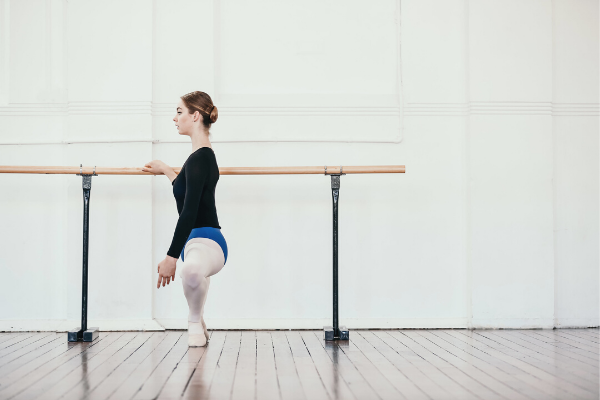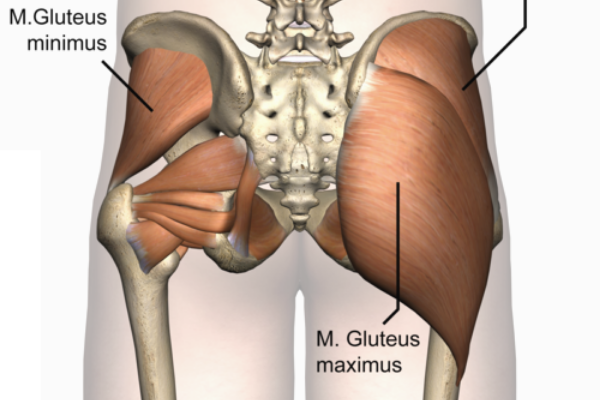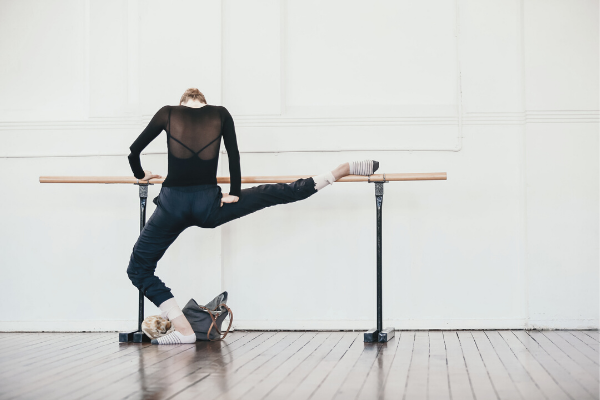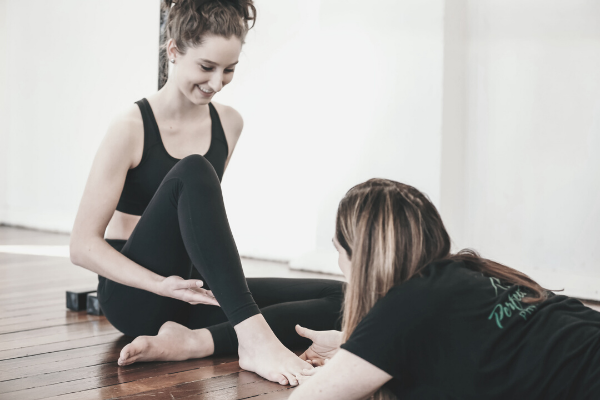Can the "Will I Ever Dance Again?" program be used for Knee Injuries
We often get asked the question "Can the Will I Ever Dance Again program be used for knee injuries?", and the answer is most definitely yes! The program can be modified to provide a supplementary training program for all kinds of injuries, and we do have posts on how to do this within the online Members Area.
As there are so many different types of knee injuries, it is impossible to note down all the modifications for these in one post, and with any injury please always make sure that you go through the program with your treating health professional to make sure that you are doing the right thing at the right time.
If you have pain in your knees this will usually require some time out from dancing full out to settle the inflammation. If you avoid this stage and push through the pain you risk more serious injury. To make sure that the pain does not come back requires specific retraining of the deep inner thigh, turnout and inner knee muscles, as well as a gradual retraining of your technique, especially allegro. Doing a floor barre and specific conditioning exercises can help you find these muscles without putting too much load through the legs and knees. The modifications that are required do this safely differ depending on the exact diagnosis.
If you have Patellofemoral Pain, a lot of focus will need to be made on regaining correct firing of the VMO muscle and retraining stability of the hip. Most often, this condition is aggravated when bending the knee and when en fondu, so initially you may need to miss out the Plie exercises in the floor barre. If you are working with a patellofemoral pain you may find our "No More Knee Pain" E-Book helpful.
If you have a Fat Pad Impingement you may need to avoid pulling the knee cap up fully if you get pain. This condition is common in dancers who have a tendency to 'sit' into their hyperextension, and therefore much of the training is on learning how to effectively stabilise the knee without hyper-extending it. As the pain comes from compression of the inflamed fat pad, further compression of the pad will cause more inflammation. It is essential to avoid this movement to allow the inflammation to settle. In this condition I often tape off the back of the knee in a cross shape so that you are unable to snap the knee back in normal walking, and also with your exercises. Please check with your therapist for any other taping techniques that you can use to offload the fat pad.
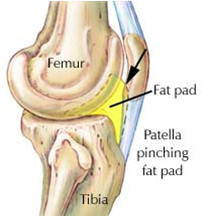
If you have Osgood Schlatters Disease, much of the focus will be on retraining the stability of the leg, and especially the gluteals, to reduce the load that is getting transmitted down the quads and into the attachment point on the tibia. Make sure to go through all of the Allegro retraining carefully, to make sure that you leg alignment is maintained as you build back into class.
If you have a tear of your ACL, PCL, Meniscus, medial or lateral colateral ligament you will need to be guided by your treating therapist as the direction of instability can differ depending on the magnitude of the injury
As a general guide, If your knee issue is aggravated by bending the knee, you may need to do the reverse of a normal flat barre (in standing). Most of the time a "flat barre" involves no rising, but does allow you to fondu, however with knee pain, often you must restrict the fondu (until you can control your turnout) but may allow you to rise. Definitely talk over any modifications of class with your treating therapist.
If you knee issue is aggravated by extension (i.e Fat Pad Impingement) then you will need to avoid full extension. Try working the following advice into your version of the program.
- Avoid the floor barre exercises as they require the knee to be extended
- All of the Port De Bras section should be fine as it is in sitting and this will offload the knee. Try doing it on a stationary chair rather than a ball
- The first 4 exercises in the Adage section should be fine, just place a pillow under your legs when lying on your stomach
- The first 3 exercises in the Pirouettes section are great for developing core stability in multiple directions, and are fine for any knee injury
- Do not do any exercises from the allegro section initially, except perhaps the gluteal activation as long as there is no pain in the knee
- As the pain settles, be guided by your therapist to slowly work through the allegro section, adding just one exercise at a time
- Slowly progress back to a full class as guided by your therapist
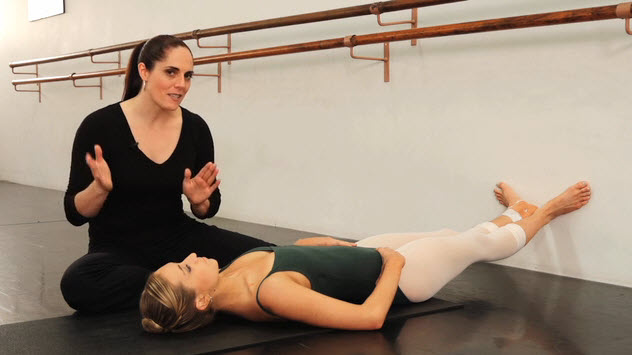
Jumping and pointe work are often the most aggravating activities when you have knee pain. The exercises in the Allegro section can help you retrain your jumping to maintain alignment of your foot, knee, hip and core and is essential in returning to jumps without aggravating your symptoms.
CLICK HERE to watch a video where Sally Harrison, one of our therapists, discusses the influences that contribute to knee pain.
Have a wonderful week!
Lisa
Injury & Foot Resources
If you are looking to delve deeper into this topic, check out the following programs:
- Will I Ever Dance Again: The “Will I Ever Dance Again?” program is perfect if you are unable to train at full capacity, whether this is due to a foot injury, surgery, an accident or illness outside of the studio. It helps you build back to full capacity gradually, while maintaining strength, flexibility and control in the rest of the body.
- Level One Dance Teacher and Therapist Training: This unique course covers a multitude of assessment and treatment techniques to individualise a dancer's training. With special focuses on Postural Control, Core Stability, Flexibility, Basic Classical Technique, The Dancers Hip, Allegro, Spinal Mobility and Arabesques, it is suitable for anyone working closely with dancers.



